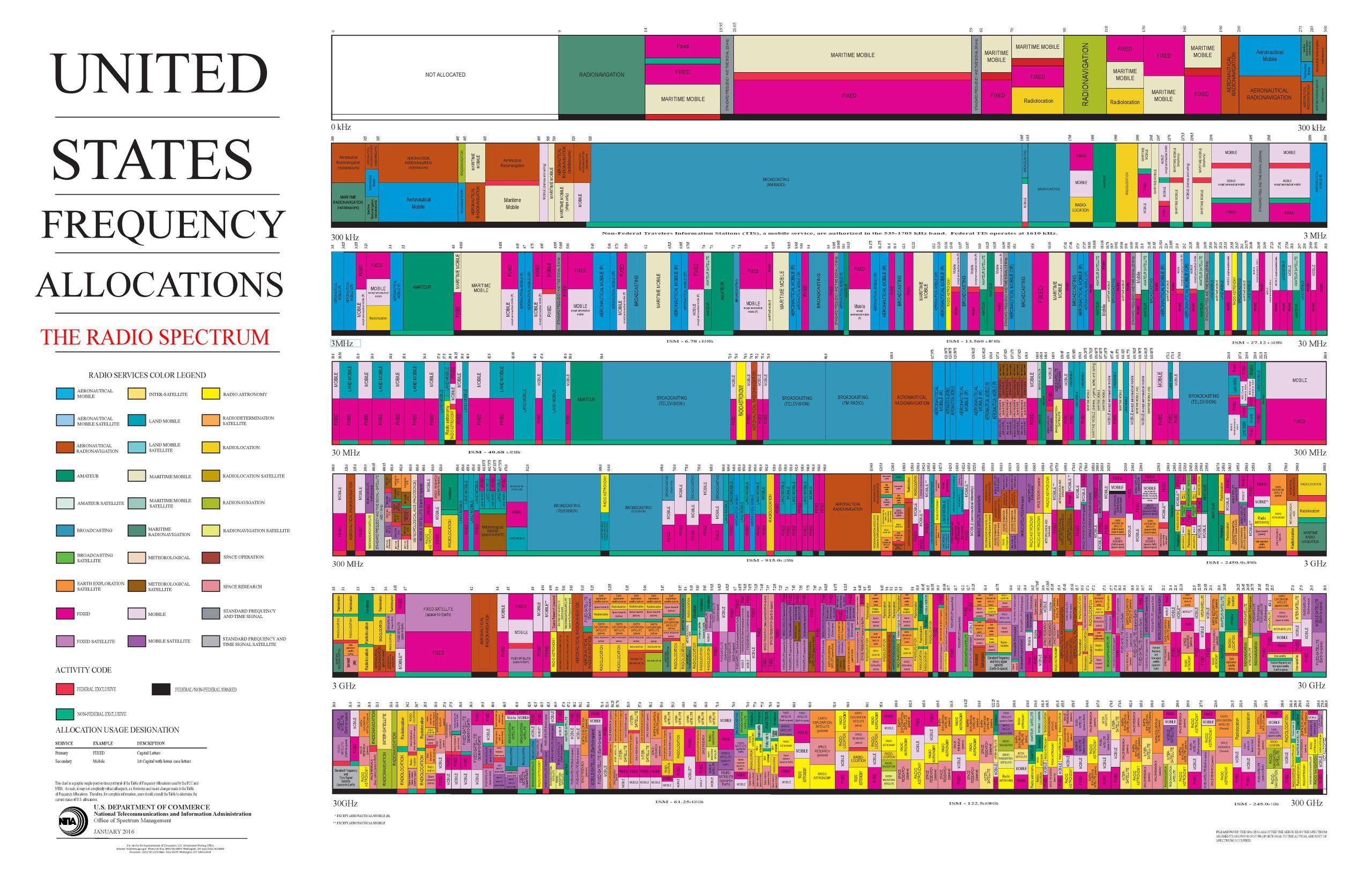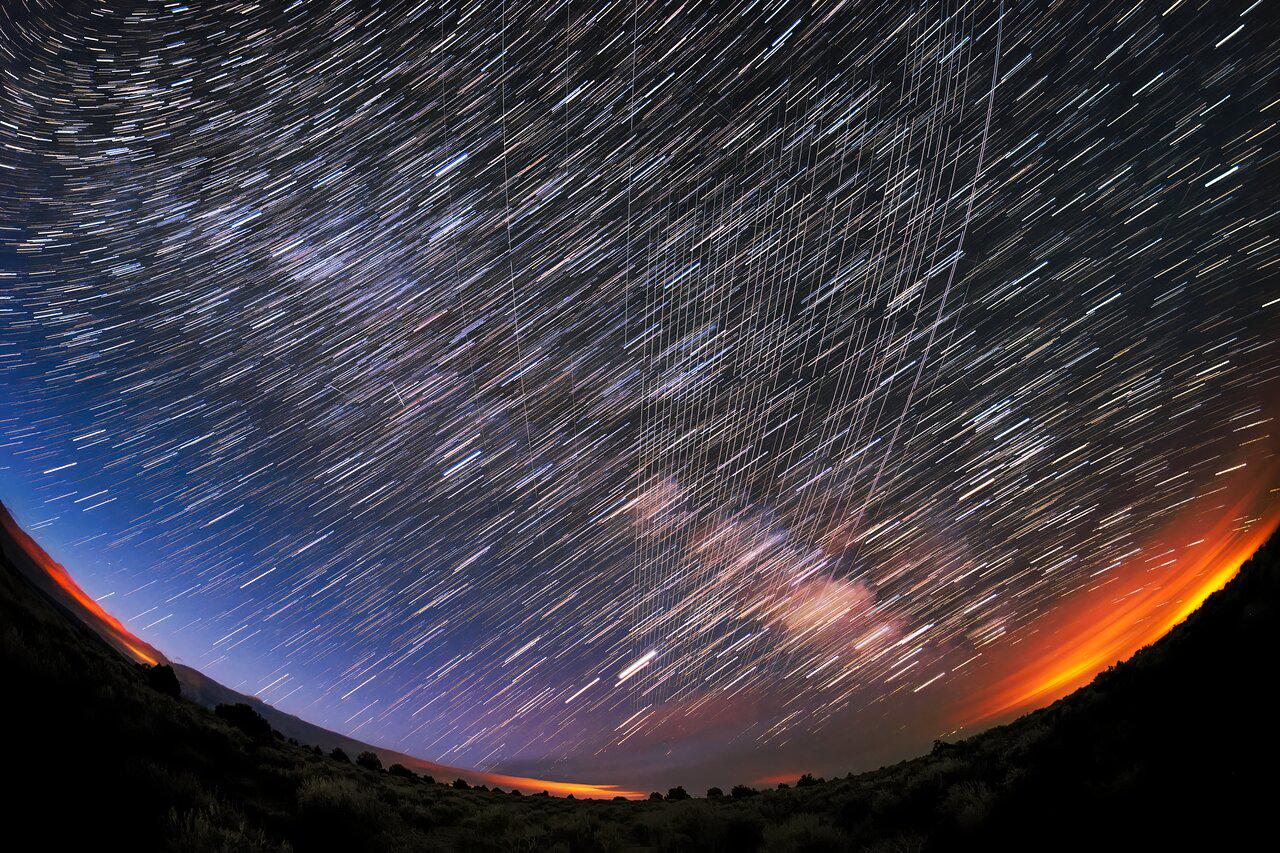
The double star Albireo in Cygnus. Two out of ten 2.5-minute exposures recorded Starlink satellites moving across the field. © NOIRLab / Rafael Schmall Creative Commons
For millennia humans have been inspired by the stars but this may soon be a thing of the past due to a significant increase in the numbers of satellites, potentially limiting our view of the night sky. EPFL scientists are part of a global initiative to better protect Earth's Dark and Quiet Skies.
Imagine Babylon around 1000 BCE. Inhabitants of the ancient city recorded their view of the stars, creating some of the earliest astronomical records. In Babylon and beyond, for millennia humans have been using the stars for time keeping, mapping and navigation and planting crops, among other things.
Fast forward thousands of years and the Italian astronomer Galileo Galilei began to change our understanding of the Universe with observations taken using his telescope, including that the Earth was not the center of everything.
Today, astronomers look into space across the electromagnetic spectrum, from low frequency radio waves and visible light up to gamma rays. Using ground and space-based telescopes they have detected fast radio bursts, thousands of exoplanets and dark matter, fundamental discoveries that help us to better understand our place in the Universe.
However, trouble is brewing in the sky. Despite the benefits of space activities for humankind, increasing light pollution and radio noise from artificial satellites are impacting our ability to access the night sky, with serious implications for science and society.
FloodingEarth's orbit with tens of thousands of satellites
There are currently around 10-thousand active satellites orbiting the Earth with estimates of 100-thousand by 2030. Most will be launched by Starlink, OneWeb and Amazon to provide high-speed internet access or Earth observation. Add to this the 37-thousand pieces of space debris larger than 10cm that also reflect sunlight and we can summarize this as "Houston, we have a problem".
"The exponentially increasing numbers of active satellites are creating higher levels of light pollution and creating long streaks of light through optical astronomy images taken from the Earth's surface. At the same time, the radio waves that telecommunication satellites emit interfere with radio telescopes," explained Professor Jean-Paul Kneib, Head of EPFL's Laboratory of Astrophysics (LASTRO).
Kneib is also the Swiss Scientific Delegate to the Square Kilometer Array Observatory (SKAO), an international organization building the world's biggest radio telescope. The Square Kilometre Array Switzerland (SKACH) Secretariat is hosted at EPFL.
This next-generation radio astronomy facility will, in particular, be able to detect for the first-time signals from the Cosmic Dawn, when the very first stars and galaxies where just about to form, tackling some of the most fundamental scientific questions of our time.
With an expected operational phase of at least 50 years SKAO will be one of the cornerstone physics machines of the 21st century, yet proliferating satellite constellations already pose a challenge to the preliminary work that it, and its precursor facilities are doing.
Radio frequencies for science and society
Today, many radio telescopes are located in protected radio-quiet zones to prevent ground-based radio frequency interference, however the sheer number of new satellites in near Earth orbit mean that these zones no longer offer the level of protection that they had in the past. Increasing satellite constellations will constantly radiate signals above these highly sensitive radio telescopes and are bound to strongly affect measurements unless preventive measures and actions are taken.
Certain narrow frequency bands are protected by the International Telecommunication Union (ITU) for radio astronomy but represent only a tiny fraction of the radio spectrum which is mostly allocated for communication, navigation, military and commercial uses.

Radio regulations are revised every 3-4 years at World Radiocommunication Conferences (WRC) and in 2023, for the first time in over a decade, radio astronomy stakeholders had a new agenda item accepted for the next meeting in 2027 to consider 'studies on the technical and regulatory provisions necessary to protect radio astronomy operating in specific Radio Quiet Zones'.
The radio astronomy community is currently preparing positions for the 2027 WRC, educating governments on the importance of radio frequencies for research and raising awareness among a broader public as well as astronomers themselves.
Governing Outer Space
Regulating what goes into space is a different story, it can be seen as the 'Wild West' up there. The Outer Space Treaty, the foundational international agreement that governs how nations act in space, was adopted by United Nations in 1967. It contains little regulation although it does guarantee freedom for space exploration and its peaceful use; free access to space; and freedom of scientific investigation in outer space.
Another key principle of the Treaty is that 'states shall avoid harmful contamination of space and celestial bodies'. When satellites reach tens or hundreds of thousands in number could they be defined as harmful contamination? How many are enough?
"It is important that the global community develops an innovative approach to space governance, that considers the complexities of today's geopolitics but also ensures fair access to space-based infrastructure for the benefit of humankind. The space community could certainly look to learn from the climate crisis and take into consideration different cultural values and views," said Emmanuelle David, Executive Director of the EPFL Space Center.

Dark and Quiet Skies
In response to the challenge of tens of thousands of satellites in the sky, the International Astronomical Union Centre for the Protection of the Dark and Quiet Sky from Satellite Constellation Interference was officially launched in 2022. The same year, and for the first time, the IAU, the SKAO, the European Southern Observatory (ESO) submitted for discussion a paper to the United Nations Committee on Peaceful Uses of Outer Space (COPUOS).
It marked the first time that the protection of Earth's Dark and Quiet Skies had ever been tabled as a formal agenda item at the United Nations. It encourages the international community to protect global astronomical observing capabilities from disruptive and harmful artificial interference. Now, Jean-Paul Kneib and Thomas Schildknetch from the University of Bern have been nominated by the Swiss government as representatives on the newly established Group of Friends of the Dark & Quiet Skies for Science and Society. It will operate under the auspices of COPUOS to compile expert recommendations for the mitigation of interference of satellite and large satellite constellations on astronomy.
"We have to recognize the harm created by the expansion of artificial light at night. As part of this Group of Friends we aim to ensure that the 'impact of satellite constellations on astronomical facilities' is on the agenda in order to discuss the issues, and ensure that they are satisfactorily resolved or mitigated," said Kneib.
Today, if you are lucky to observe a beautiful starry night in a remote location, you will see more satellites in orbit than there are shooting stars. The famous Starlink's strings of pearls may be momentarily fascinating, but do we want to see hundreds of moving satellites all the time, from any location on Earth outshining the stars? Is the pristine night sky a human heritage?
"In the absence of any existing regulation, our societies, not private companies, should be deciding on whether to protect our Dark and Quiet Sky as a resource shared by all humankind," concluded Kneib.
The EPFL Space Center has this week been co-hosting the Space Debris and Sustainability Conference in Hong Kong, presenting the latest trends, challenges and opportunities for space sustainability. From January 6-8 2025 the Center will host the Swiss Space Sustainability Research Days where Dark and Quiet Skies will be a key topic on the agenda.






